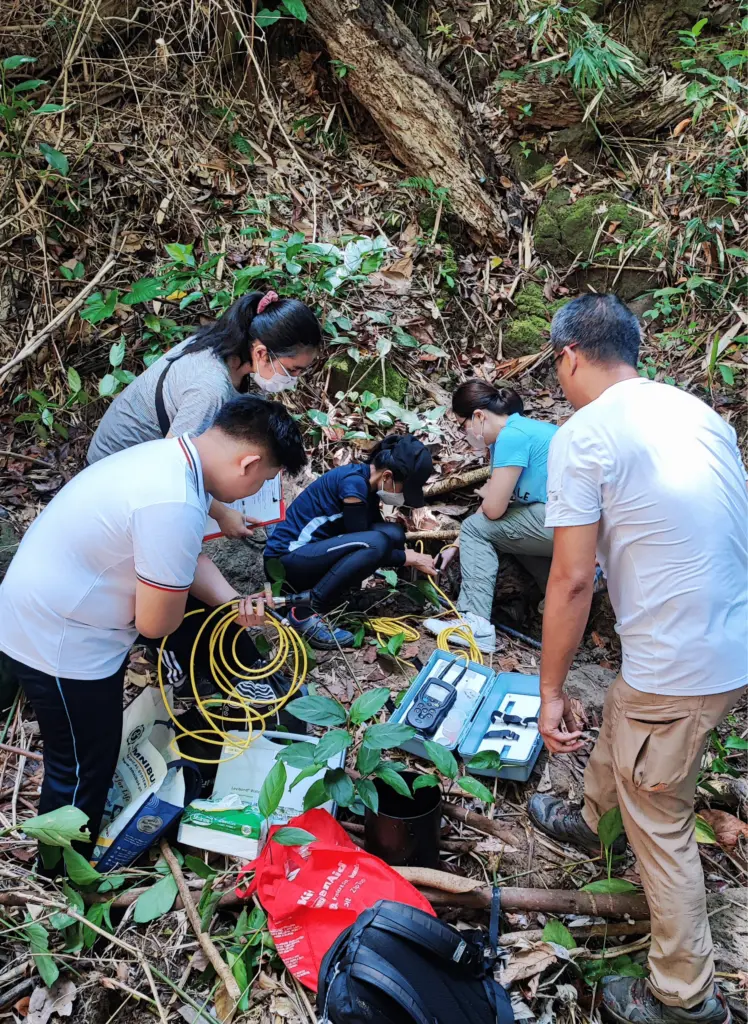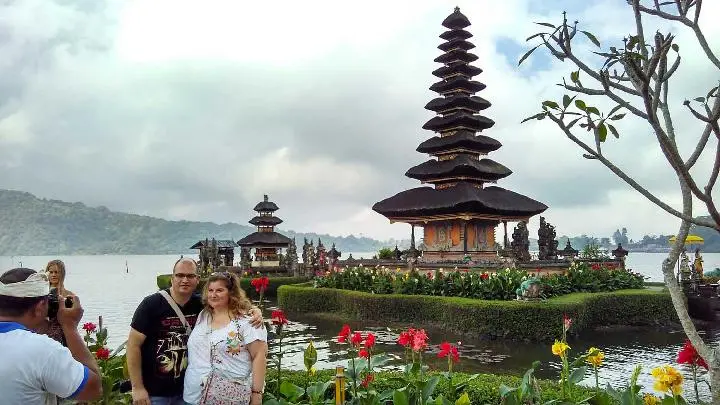Breaking News
The Hidden Crisis: Groundwater Quality in the Philippines and Why It Matters

PGHI Project staff measuring onsite groundwater quality using a multimeter in one of the forested sites in Ilocos Sur.
Groundwater—water trapped beneath the Earth’s surface—is a resource that may be out of sight, but it is certainly not out of mind for many Filipinos. This invisible resource is vital for everyday life, especially in agriculture, where it provides the lifeblood for irrigation. However, as our demand for food grows and technology allows us to tap deeper into the Earth, groundwater faces an urgent crisis of over-extraction and contamination that demands immediate attention.
In the Philippines, these problems are further complicated by the unique challenges posed by the country’s wet and dry seasons. During extreme weather events, runoff from farmlands can carry harmful chemicals into the groundwater, threatening the ecological services it provides, its biodiversity, and the general public’s health. Unfortunately, despite efforts to monitor water quality, the full extent of these problems remains poorly understood. Consequently, this produces patchy data and inconsistent assessments nationwide.
A team of researchers headed by Dr. Francis S. Magbanua of the University of the Philippines Diliman College of Science, Institute of Biology (UPD-CS IB), and project partners from Ilocos Sur, Benguet, Nueva Ecija, Cebu, and Davao del Norte have taken a closer look at the situation. Their study focused on how groundwater quality varies between agricultural and forested areas across seasons. The findings were both enlightening and concerning.
Comparison of transformed values of groundwater temperature, pH, DO, EC, and DOC between seasons (dry vs wet) and land uses (agricultural vs forested). (Photo credit: Velasco et al., 2025)
The research showed that land use (agricultural or forested) and the season (wet or dry) significantly impact groundwater quality, but in different ways. Agricultural land use generally leads to warmer, more chemically rich but poorer groundwater quality. It also increases the risk of groundwater contamination due to farming activities. Forested areas, on the other hand, help maintain cooler, cleaner, and more oxygen-rich groundwater. However, their terrain—such as steep slopes—can influence the amount of organic matter present in the groundwater.
During the wet season, increased rainfall helps cool groundwater and improves its oxygen levels. It also raises pH as rainwater carries minerals and organic material into the groundwater. Quite the opposite, the dry season brings warmer groundwater temperatures. Although oxygen levels may sometimes rise due to reduced water movement, overall groundwater quality tends to decline. Lower groundwater levels can lead to more concentrated dissolved ions and potential water quality concerns. Interestingly, the study found no combined effect of land use and season, meaning that while each factor influences groundwater quality independently, they do not amplify each other’s impact.
But even though the effects may be independent, the message is clear: both land use and seasonal changes are crucial to understanding the state of groundwater resources. For example, the presence of dissolved organic compounds (DOC) is indicative of human activities but was also observed in the forested sites of this study, suggesting potential disturbance across different land use types.
“Groundwater is a limited resource, and its quality is steadily declining,” the researchers warn. “Human population growth, economic development, and environmental changes all contribute to the pressure on this vital resource.” The study emphasizes that the risks to public health and biodiversity will continue to grow without a comprehensive, nationwide approach to managing and monitoring groundwater quality.
This research is part of a larger effort called the Philippine Groundwater Health Index (PGHI) Project, which seeks to better understand and protect the country’s groundwater. Funded by the Department of Science and Technology (DOST) and monitored by the DOST-Philippine Council for Agriculture, Aquatic, and Natural Resources Research and Development (PCAARRD), the project aims to provide the scientific backing needed for effective policies to safeguard this essential resource. The team collected water from wells and springs in agricultural and forested areas in five provinces: Ilocos Sur, Benguet, Nueva Ecija, Cebu, and Davao del Norte.
In the end, the study underscores a simple but vital truth: clean, safe groundwater is critical for the future of the Philippines. By recognizing the factors that affect groundwater quality and taking action to protect it, we can ensure that future generations have access to the clean water they need to thrive.
-

 Lifestyle-Health4 months ago
Lifestyle-Health4 months agoInvesting ₹10,000 a month via SIP in this mutual fund would have swelled to ₹1.71 crore in 21 years. Check how
-

 News In Diaspora4 months ago
News In Diaspora4 months agoHotels and homes on Crete evacuated as wildfire burns out of control
-

 Breaking News3 weeks ago
Breaking News3 weeks agoIsrael Names 77 Countries That Boycotted Netanyahu’s UN Speech In Protest Over Gaza War
-

 Lifestyle-Health4 months ago
Lifestyle-Health4 months agoMultibagger small-cap stock under ₹50 jumps despite sell-off in Indian stock market
-

 Lifestyle-Health5 months ago
Lifestyle-Health5 months agoOgie Alcasid’s daughter Leila ties the knot in Australia
-

 Lifestyle-Health4 months ago
Lifestyle-Health4 months agoDriving Abroad: These 34 countries accept SA licenses
-

 Lifestyle-Health2 months ago
Lifestyle-Health2 months ago11 signs of growth that you might have missed
-

 Politics5 months ago
Politics5 months agoFinally Federal Government of Nigeria Assures Citizens, Says The President Isn’t Controlled by Any Cabal
-

 Breaking News2 months ago
Breaking News2 months agoVeteran actress, Peju Ogunmola, loses only child, Ayomikun
-

 Lifestyle-Health4 months ago
Lifestyle-Health4 months ago10 Unwritten Rules for Visiting Bali that Travelers Should Know
-

 Lifestyle-Health2 months ago
Lifestyle-Health2 months agoWhen to take time off and focus on yourself and your family
-

 Lifestyle-Health4 months ago
Lifestyle-Health4 months agoAyala, UPC Renewables JV to sell stake in 1 GW projects in $600 mn deal

